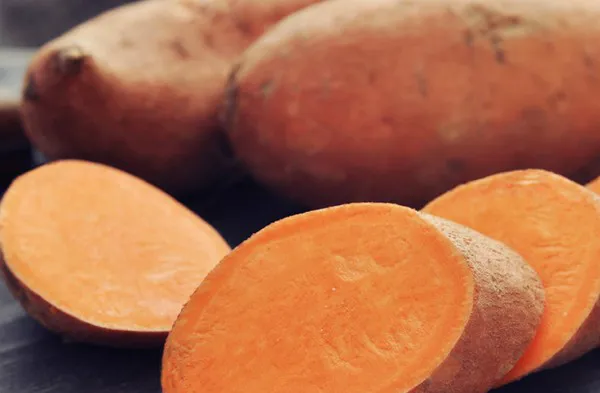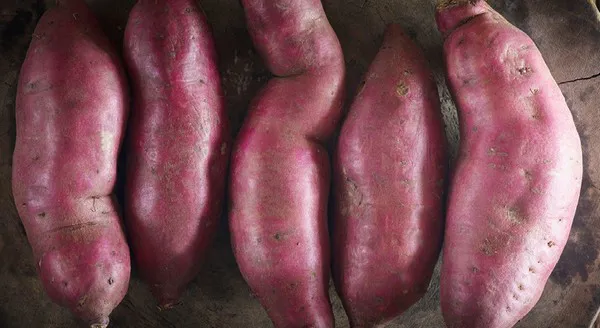Hort Innovation is working with sweetpotato growers to lift the quality of the produce, and in turn, increase demand and sales across Australia.
The organisation is responsible for investing the marketing levy into a range of activities including demand creation, increasing profitability, efficiency and sustainability, improving capability and innovative culture and business insights.
In the recently released 2021/22 Annual Report, Hort Innovation highlighted that produce quality is the main driver for buying the vegetable for 63 per cent of Australian households. A new Hort Innovation Sweetpotato Fund investment began in 2021 to improve the quality of sweetpotato across the industry by engaging key stakeholders across the value chain, including growers, wholesalers and retailers, so quality can be monitored and maintained in the long term. It also identified there is a significant opportunity to shift ‘medium users’ into doubling their consumption, with a direct correlation to quality.

In the report, a grower from Northern NSW, Matthew Prichard says the industry was concerned about the quality in retail displays.
"There are three areas where you can experience problems that impact sweetpotato quality and can lead to consumer dissatisfaction; on-farm, during the supply chain, and with retailers," he said. "This project works to align growers and supply chain participants such as transporters, agents, merchants and retailers. Getting on the same page and ensuring we’re driving in the same direction will help increase sales of sweetpotato through bringing new consumers into the category and encouraging existing consumers to buy more; increasing purchase frequency and average weight of purchase."
He added that research found that skin damage is the main factor causing issues on the shelf, which are caused by on-farm issues, allowing growers to focus on packing equipment that handle the produce more gently. The next issue is that some temperature and humidity issues are occurring in the supply chain, which has already led to temperature trackers being used.
"I’m looking forward to seeing how this project progresses and how I can change my methods on-farm to improve the quality of our sweetpotatoes," Mr Prichard said. "It’s all about figuring out where the issues are happening and addressing them. As a grower, I’m making efforts to provide better quality sweetpotatoes from the farm so that the retailer receives high-quality potatoes with less skin damage, stored in better temperature and humidity parameters so that the customer will get the best experience they can."

Over the five years to 2020/21, Australia’s production grew at an average annual rate of 9.5 per cent in value and 6.4 per cent in volume. Of the 104,206 tonnes produced in 2020/21, 90 per cent was distributed as fresh supply (of which 78 per cent went into retail and 22 per cent into food service). On average, Australian households bought sweetpotatoes 7.9 times in 2021/22 and 6.8 million Australian households purchased the vegetable in that year.
There were also investments in the domestic marketing campaign focusing on the health benefits as well as taste and appearance.
 "The 'crazy good king of carbs' idea was brought to life via a 'Sweetpotato King' persona, that marketed this vegetable as vibrant and superior to other carbohydrates, by demonstrating the huge variety of healthy and tasty dishes it can be used in," The Hort Innovation Annual Report said. "Reclaiming its healthy image through advertising reminded audiences that Australian sweetpotatoes hold more value than being an unhealthy pub meal. A creative testing research study showed that the new creative assets delivered a compelling message to engage consumers. The main messages the assets successfully conveyed was the “superior” (quality) to other carbohydrates and its value in terms of versatility, taste and nutrition."
"The 'crazy good king of carbs' idea was brought to life via a 'Sweetpotato King' persona, that marketed this vegetable as vibrant and superior to other carbohydrates, by demonstrating the huge variety of healthy and tasty dishes it can be used in," The Hort Innovation Annual Report said. "Reclaiming its healthy image through advertising reminded audiences that Australian sweetpotatoes hold more value than being an unhealthy pub meal. A creative testing research study showed that the new creative assets delivered a compelling message to engage consumers. The main messages the assets successfully conveyed was the “superior” (quality) to other carbohydrates and its value in terms of versatility, taste and nutrition."
For more information
Hort Innovation
Phone: +61 2 8295 2300
info@horticulture.com.au
www.horticulture.com.au
